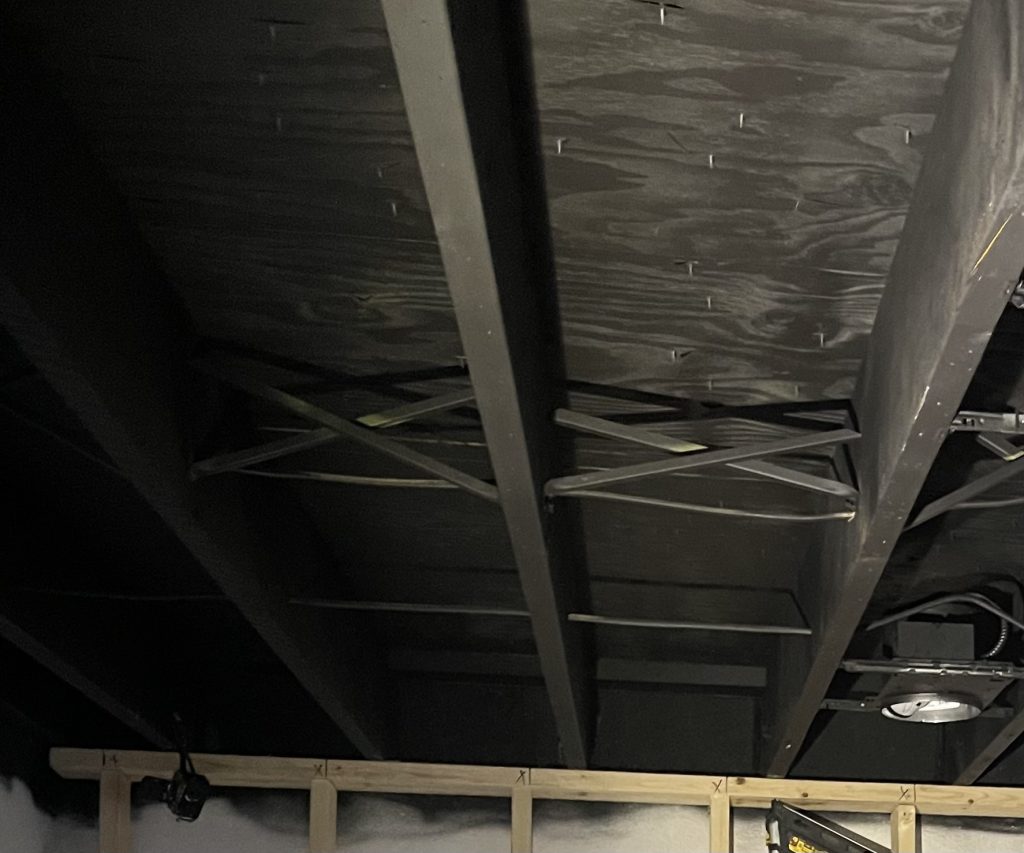
Cross bracing is a fundamental technique in structural engineering, particularly in the framing of floors in residential and commercial buildings. This method involves placing diagonal supports between floor joists to provide additional stability and strength. Here’s an in-depth look at the purpose of cross bracing floor joists and the benefits it offers.
1. Enhancing Structural Stability
Purpose: Cross bracing helps to stabilize the floor joists, preventing them from swaying or shifting.
Explanation: Floor joists are horizontal beams that support the weight of the floor above. Without proper bracing, these joists can experience lateral movement or bending under load. Cross bracing creates a network of diagonal supports that transfer loads more effectively and keep the joists aligned. This added stability is crucial for maintaining the structural integrity of the floor system and preventing movement that could lead to structural issues or damage.
2. Reducing Floor Bouncing and Vibration
Purpose: Cross bracing minimizes the bouncing and vibration experienced in floors.
Explanation: Long spans between floor joists can lead to noticeable bounce or springiness in the floor, which can be uncomfortable for occupants and cause issues with the installation of flooring materials. By adding cross bracing, the floor system becomes more rigid, reducing the amount of deflection or flexing that occurs under load. This results in a more solid and stable floor, enhancing comfort and reducing potential disturbances.
3. Preventing Joist Twisting and Warping
Purpose: Cross bracing helps prevent joists from twisting or warping over time.
Explanation: Wood joists are susceptible to changes in moisture levels, which can cause them to twist or warp. Cross bracing helps to maintain the alignment of the joists, counteracting the effects of these changes. By keeping the joists in their proper position, cross bracing ensures that the floor remains level and reduces the risk of structural problems caused by warped or misaligned joists.
4. Distributing Loads More Effectively
Purpose: Cross bracing aids in the even distribution of loads across the floor joists.
Explanation: When loads are placed on a floor, they are transferred to the joists. Cross bracing helps distribute these loads more evenly across the entire joist system. This prevents localized stress on individual joists and helps ensure that the floor can support weight more effectively. Even load distribution is crucial for preventing overloading and potential failure of the joists.
5. Improving Overall Safety
Purpose: Cross bracing enhances the overall safety of the floor system.
Explanation: A well-braced floor system is less likely to experience structural failures, such as sagging, cracking, or collapse. By providing additional support and stability, cross bracing helps ensure that the floor can safely handle the expected loads and stresses. This contributes to the overall safety of the building and its occupants, reducing the risk of accidents or damage.
6. Facilitating Easier Installation of Flooring
Purpose: Cross bracing can make the installation of flooring materials easier and more effective.
Explanation: A properly braced floor system provides a stable and level surface for the installation of various flooring materials, such as hardwood, tile, or carpet. By minimizing movement and ensuring alignment, cross bracing helps create a smoother and more reliable base for flooring, resulting in a better finished product and fewer installation issues.
Cross bracing is an essential component of floor joist systems that significantly contributes to the structural stability, safety, and performance of a building. By enhancing stability, reducing bounce and vibration, preventing twisting and warping, distributing loads effectively, and facilitating easier flooring installation, cross bracing ensures that the floor system can support the demands placed upon it. This simple yet effective technique plays a crucial role in maintaining the integrity of the floor structure and ensuring the long-term durability of the building.
Cedar Hill St. Louis Jefferson County Olivette Kirkwood Ballwin Arnold Franklin County St Charles County Fenton High Ridge Dittmer Creve Coeur
